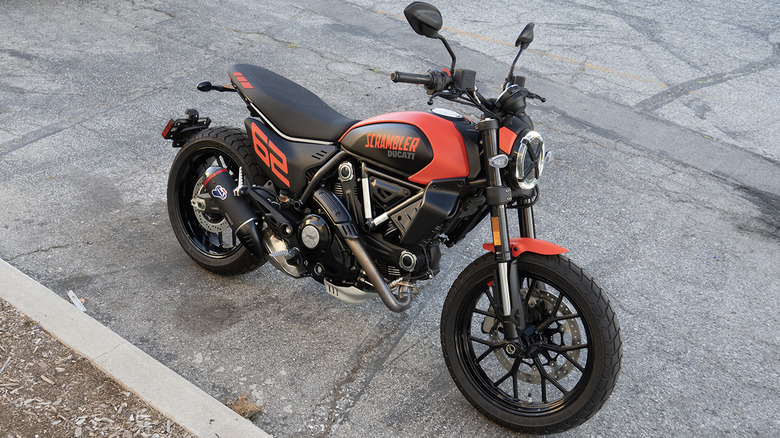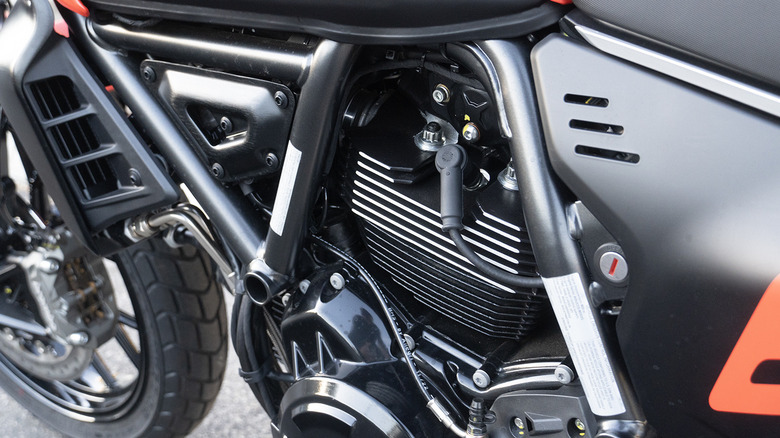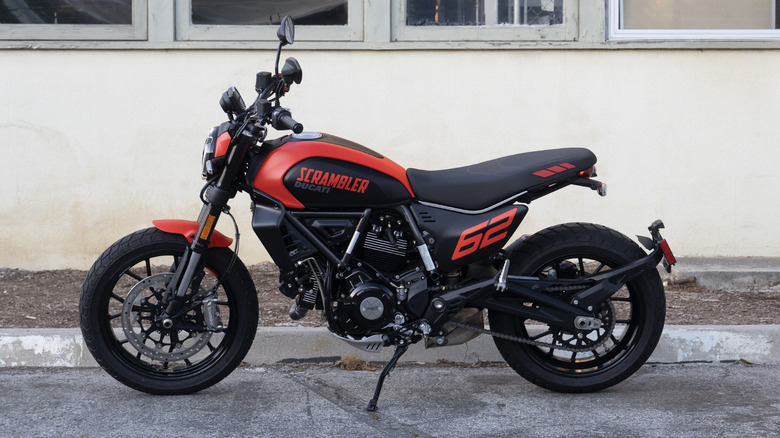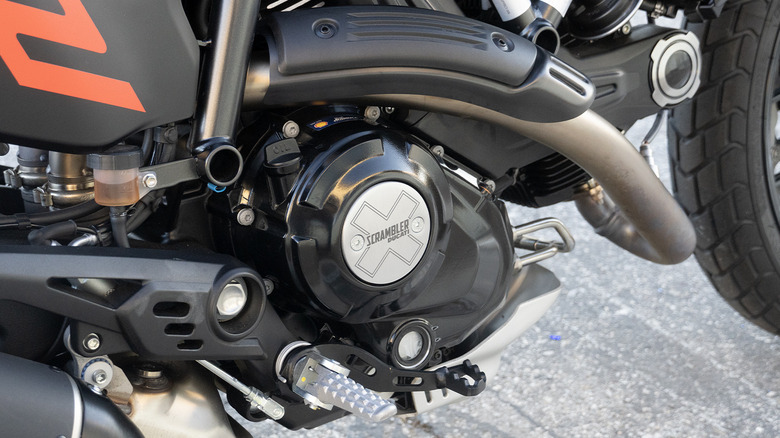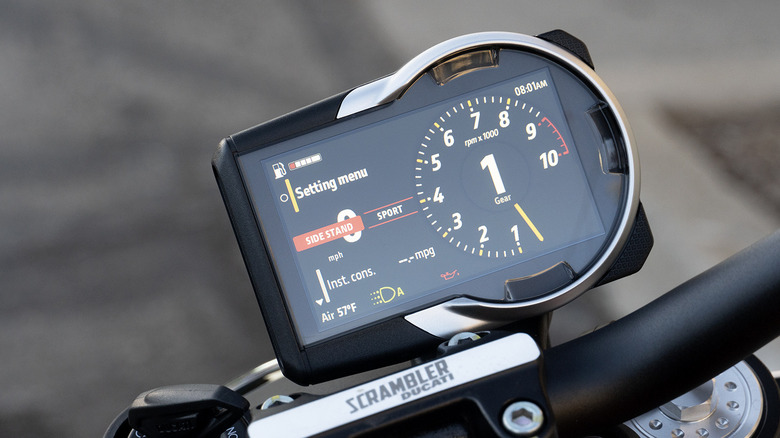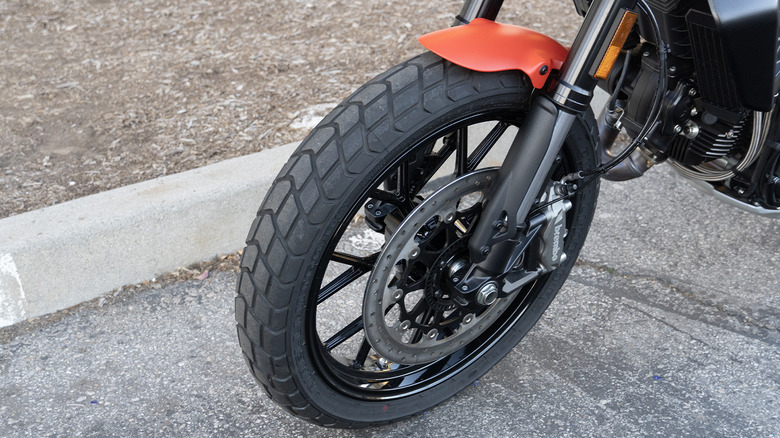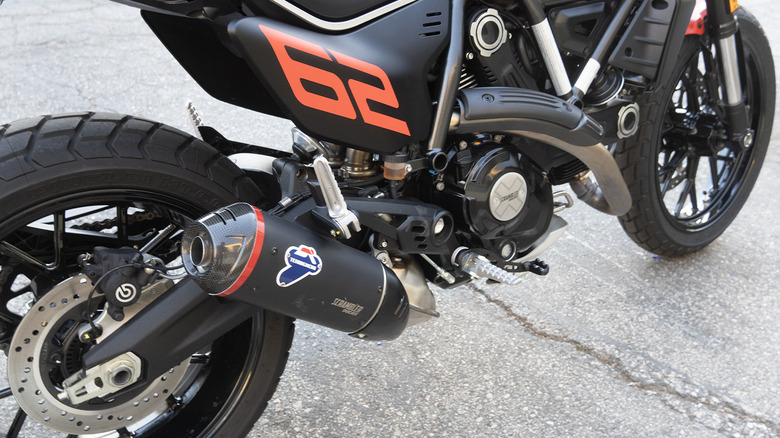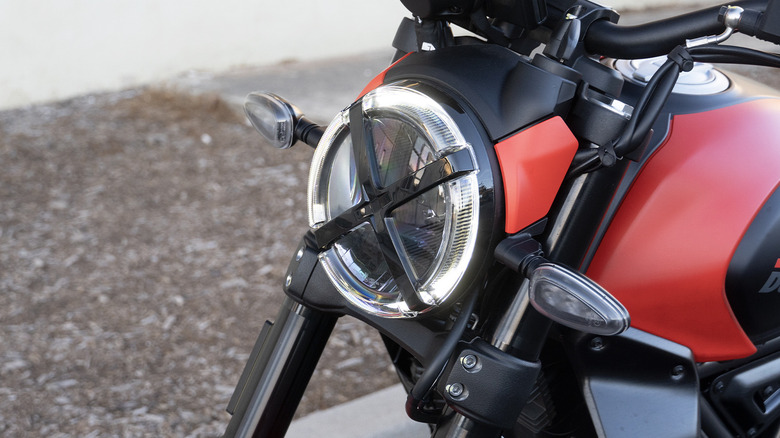2024 Ducati Scrambler Full Throttle Review: Heritage Grows Up (And So Does The Price)
The cheapest bike in Ducati's lineup gets a big update for 2024, as the Scrambler enters a new generation simultaneously focusing on improvements to tech and performance. Ducati calls the new Scrambler the "Next-Gen" in marketing materials, but some of the revisions on the new Full Throttle trim make for significant enough changes to perhaps make that terminology accurate.
To an extent, upping the Scrambler ante almost loses the model's entry-level position in the Ducati lineup, now edging closer up under the Monster which now starts at less than a grand more. But the Scrambler offers an entirely different style than the modern trellis-less Monster, which is by now a stalwart in the history of Ducati but still can't even touch the Scrambler's origin story that traces all the way back to 1962.
Ducati revived the Scrambler in its modern form for 2015, however, and the new generation Full Throttle still retains a unique combination of an air-cooled motor, with upgraded tech and minor weight savings to go along with style points that largely justify the price tag. I received this Scrambler Full Throttle the same day I gave Honda back a new SCL500, a "Scrambler-style motorcycle" in legalese that definitely aims to undercut Ducati, so I climbed on for a first ride very curious to learn how the Scrambler market lines up at the upper reaches of affordable commuters.
Immediate impressions of Ducati's Scrambler
Even walking up to the Ducati Scrambler, higher quality materials clearly stand out versus the Honda. The design also coalesces into a noticeably more compact, dense presence—whether the Honda's smaller motor and more upright posture actually hews more closely to the original Scrambler ethos remains a serious question, though. And I would personally prefer just about any color to the somehow bright and matte red color that Ducati calls "Rosso GP '19" (and other Scrambler variants get many, many more color choices, but more on that later).
Then I pushed down on the familiar Ducati ignition switch and the choppy L-twin barked to life, as probably the single most important upgrade in the Full Throttle trim package reared its head. That's a Termignoni stainless steel exhaust setup with a compact single-sided silencer and a carbon tip. Give a little twist of throttle and oh yeah, this is a whole different ballgame.
Racing revisions totally shift up the Scrambler spirit
Climbing aboard, a similar bench seat only two-tenths of an inch higher immediately feels sportier thanks to slanting both downward toward the tank but also at the sides—a bench just this side of a saddle, really. I needed to check the spec sheet to confirm, but also immediately noticed slightly lower handlebars and pegs that felt maybe a bit further forward than the Honda. But then again, I'm always surprised how small differences to geometry make such a big difference when you're riding. And it turns out that the Full Throttle's slightly lowered bars contribute to the sensation of the pegs being further forward, but they're actually slightly further back and up.
The lower bars, Termi exhaust, and more sporting seat all purposefully enhance the racing spirit that Ducati hopes the Scrambler Full Throttle can deliver. That exhaust silencer to the right of the swingarm loses an essential part of the image, though, since it's not routed high like on the Honda! I prefer lower and sportier in just about every scenario anyway, and the prospect of a semi-cafe Scrambler always sounds and looks good to me. But wait, the original Ducati Scrambler never routed the exhaust upward, so we're sticking to tradition in this case, too.
But the revisions may also reveal an acknowledgment that amid an increasing number of competing entrants to the Scrambler world, further differentiate might help Ducati's sales figures—and especially among new riders or conquest customers. Plus, the reality is that 99% of buyers will never take their Scramblers in the dirt, no matter how rugged their technical selvedge denim outfits and beefy boots might look.
Scrambler specs on paper
When I got back to the computer, the Scrambler Full Throttle's specs on paper sounded pretty respectable. The two-valve air-cooled L-twin sounds antique, but still wrings 73 horsepower and 48 lb-ft of torque out of only 803 cubic centimeters. That's just shy of double the Honda's power, but unsurprisingly, about 15% less than the Scrambler 1100 trio that Ducati introduced for 2018. The Scrambler lineup has received multiple changes since 2015, but for now the three remaining options come only with that 803cc twin.
Sticking with the smaller engine likely helps to highlight the Scrambler's fun factor, and in total the new generation went on a diet that cut out 8.8 pounds. The Full Throttle now weighs a claimed 408 pounds ready to ride—for those following along, that's almost double the power of the Honda while actually shaving a few percentage points of poundage. Where the SCL500 demands life at full throttle at least some of the time, rarely will the Ducati need a full yank on the grip.
Other revisions that helped to trim the weight (and bolster the Next Gen claim) include a new trellis frame and a new swingarm, which scoots the rear shock absorber forward. Plus, a new eight-disc clutch makes squeezing the lever in traffic much lighter, with compact packaging that reduces asymmetry around the legroom by a fair amount when stopped at lights.
Riding off into the sunset
In terms of tech, the Full Throttle also gets features and ride modes to go with the stylistic and performance enhancements. A 4.3-inch gauge screen shares crisp design with much of the Ducati lineup, and switching to ride-by-wire made customizable ride modes possible, including the ability to play with throttle power delivery, ABS cornering, traction control, and even an up and down quickshifter. Again, we've come a long way from the Honda's keep-it-simple-silly gauge cluster and utilitarian appeal.
Don't think the Ducati Scrambler entirely loses the classic spirit in favor of fancy exhaust and fluffy tech, though. All the modernization still centers around a relatively upright riding position and that torquey air-cooled engine. I only needed to lightly let off the clutch lever and give a hint of throttle to bring on legitimate, if not spellbinding, acceleration. The suspension rides stiffer than I expected, too, with the rear shock's preload still on the factory settings. This Scrambler avoids much of the nose dive under braking that ADV and other upright bikes inevitably produce. Maybe the front-to-rear stability can be attributed to the inverted Kayaba forks, which produce progressive and predictable damping despite a four-pot Brembo front caliper chomping down on a 330-millimeter front brake rotor.
Nearly twice the power and about the same wet weight means more fun a straight line, but part of that sporty sensation might also come down to the Ducati Scrambler lineup's use of an 18-inch front wheel and tire, rather than going another inch larger over the 17-inch rear. Less pizza dish aero on highways is a plus, since the Ducati can hold 80 miles an hour much more easily. And the Pirelli MT60RS tires deliver both a better aesthetic, with more noticeable knobbiness, and also more confident roll into corners than the Dunlops on the Honda.
Starting to get some tilt
Cruising around town, my 6'1" frame fit well in a relaxed posture with both forearms unweighted. But when the time came, I found myself leaning forward and out while sliding off the saddle without thinking too hard. Countersteering into a leaning turn while sitting straight upright on motorbikes always feels weird to the road cyclist in me, and the same held true on this Ducati to an extent, but the quick transition to hanging half my hips off came and went almost immediately. Could I canyon carve this bike? Well, yes, but I'd probably go for even lower bars, a la the Scrambler Nightshift (or an even more cafe'd custom setup).
But really, this Scrambler still fits into the current commuter segment along with its competition—sump skid plate and miniaturized front fender notwithstanding. The clutch weight certainly leans toward city slickers. And both the sporty seat and suspension also seem ripe for riding two-up, at least since this Scrambler can probably handle the additional weight without bogging down speed too badly.
The full Scrambler range funnels into "just" three models for 2024: the Full Throttle, Icon, and Nightshift. No more 1100, as mentioned, nor the off-roadier Desert Sled. Instead, the graphics package harkens back harder to Ducatis flat-track racing on dirt ovals since 1962—hence the big 62 decal on my Full Throttle's ergonomically designed side number plate. I kind of enjoy black spoke wheels on the Nightshift, too, and wonder how much the non-Termignoni exhaust rumbles. But of course, the Icon with nine different color options and the lowest starting sticker of $10,995 still nails the entry-level appeal best.
Evolving out of Ducati history
To an extent, despite the technological sophistication, the Scrambler's simple soul still shines through and nails the quintessential Ducati experience at that lowest starting price. Compared to my 2006 Monster S2R 1000, for instance, the engine sounds and grunt down low do feel familiar—and undoubtedly more so than the new Monster. The new Monster actually seems like less of a successor to its own predecessors in a way, perhaps because Ducati threw the trellis frame out the window and scooted the seat further forward and bars further back, or perhaps because the Streetfighter largely inhabits a meaner, more monstrous level of snarl.
But in the mix, the Scrambler rides light and friendly, a happy balance of old-school looks, sounds, and smells with all the accoutrements to attract buyers who specifically don't want to live with a classic Ducati. A two-year, 24,000-mile warranty helps, though the air-cooled two-valve motor's 7,500-mile valve clearance check interval sits at the bottom of the Ducati heap currently. If such concerns sound less important than daily life, I can confirm that the Scrambler has my favorite kickstand of any motorcycle I've ever ridden—another little detail that makes a big difference on every ride.
Standing out from the Scrambler crowd
By now, Ducati's Scrambler needs to take on Honda's SCL500 at $6,799 and the forthcoming Triumph Scrambler 400 X, which might deliver the best styling out of the bunch along with a price tag of only $5,595. If the SCL500 felt underpowered in hindsight after my brief time with the Ducati Scrambler, though, the Triumph 400 will no doubt border on unlivable in the raging hodgepodge of Los Angeles traffic. At least it weighs below 400 pounds wet...
Compared to the other Scramblers, to my eye the Ducati still delivers more presence—and in this particular instance, that might be the most important thing for each bike-maker to get right. Each of the Scramblers is more about the style, after all, enveloping a bike that can do many things satisfactorily but none particularly well.
Clearly, Ducati believes that moving another tick upmarket might be something the Scrambler customer base wants. And the new Full Throttle revs right into that realm while reducing the almost inevitable urge to pick up a new bike and immediately bolt on aftermarket exhaust or a tail tidy. We've even got a nifty faux race tape X on the headlight! For fans of Scrambler history, these little details might make all the difference, even if the Full Throttle trim probably departs from the classic Scrambler style the most.
